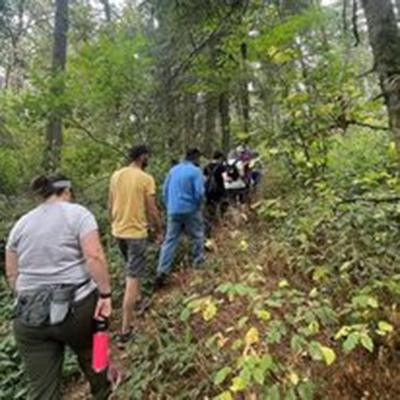Linn County Master Gardener
OSU Linn County Master Gardener.
What kinds of birds are visiting your yard this winter? Different bird species have food preferences but they all need energy to bear the winter weather.
Wild bird foods are in the stores, usually with suet – fat, seeds and nuts. You may have to experiment with different ingredients to see what your birds are looking for.
Put a seed mix in an open place you can see from your warm window and watch to see who your customers are. Which seeds did they leave behind? Don’t waste your money on those if they are not being eaten.
Sunflower seeds are enjoyed by many types of perching birds so mixes with a small proportion of sunflowers might be wasted.
Most birds in our area do not eat millet seed, which may attract rodents. Doves, quail and ground-feeding birds will eat white millet.
Thistle seed is expensive and preferred by finches. Thistle seed feed mix might be best put out in feeders that dispense one seed at a time to save money and to keep it from sprouting under the feeding area.
Jays, chickadees, nuthatches (and squirrels) enjoy roasted peanuts, cracked or in the shelf. Raw peanuts contain toxins that can be harmful to small animals.
Commercial suet mixes are fat from cows and sheep. It attracts insect-eating birds that need animal fat for energy.
You can trim cooked fat off your meat at home, freeze it and chop it for the birds. Freeze it first, so it is firm and easier to chop.
To make your own suet cakes you can substitute peanut butter, lard or vegetable shortening for suet.
Recipe: Heat 1 cup fat with 6 cups water until it boils. Add 2 cups cornmeal and ½ cup flour. Allow it to cool. Optional birdseed, nuts, seeds, oatmeal or dried fruit can be stirred in before packing the mixture into molds (cottage cheese or freezer containers). Allow to harden.
Avoid feeding birds bread, donuts, cookies or cracker. Eat them yourself because they do not provide the nutrition birds need. Bakery products mold easily and birds get sick from eating mold foods. Those food also attract mice, rats and starlings.
Birds do not usually depend on only one food source for survival. Hopefully plants with seed heads were left for them to forage after fall die-back.
Keep feeding them until their natural food is available and maybe they will stick around longer.
Store bird food in hard plastic or metal containers to keep rodents from raiding it.
Bird feeders vary, also, according to the type of food they will dispense. The type of feeder you need also corresponds to the bird species that might frequent them. Feeders should be cleaned periodically for the health of the birds.
For good information about feeder selection, go to , a Feed Wild Birds fact sheet from wildlife specialists.
Watching wild birds can be entertaining, and a great way to get children interested in nature.
For a little extra attention, try keeping a journal or list of birds you see. Try photographing them or drawing them.
Mostly be satisfied that you are helping them get through a time when natural food is hard to find.





